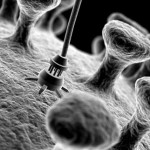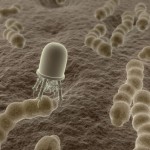
usalawyerstoday.com
In product liability litigation, product sellers often rely on the so-called state-of-the-art defense. By raising this defense, the seller – usually the product manufacturer – argues that the risks or hazards of the product complained of in the current litigation were not known to it at the time the product was designed, marketed, and sold to the user or consumer. As with everything in the law, arguments abound as to how to define the state of the art. For example, manufacturers have argued that the state of the art should be defined as the industry standard at the time. This was essentially the argument made by asbestos insulation products manufacturers in the seminal case of Borel v. Fibreboard Paper Products Corp., 493 F.2d 1076 (5th Cir. 1973). The court had a very different view, however. Reflecting concerns that using the industry standard to define the state of the art at any point in time would encourage entire industries to be lax in conducting research on the hazards of their products and/or disseminating information about known hazards to the public, the court held the manufacturers to the standards of experts in the industry. The court defined this as follows:
The manufacturer’s status as an expert means that at a minimum he must keep abreast of scientific knowledge, discoveries, and advances and is presumed to know what is imparted thereby. But even more importantly, the manufacturer has a duty to test and inspect his product. The extent of research and experiment must be commensurate with the dangers involved.
Id. at 1089-90.
Plaintiffs, on the other hand, prefer to define the state of the art to reflect technology on the cutting edge of scientific knowledge at the relevant time. This concept would limit use of the state-of-the-art defense to a much smaller group of cases and result in broad liability for product sellers. This view completely ignores whether making the product safer was feasible at the time or whether the utility of the product was greater than the possibility of any dangers it might create. At the extreme, sellers could be absolutely liable for any and all injuries from their products. Thus, in Beshada v. Johns-Manville Products Corp., 447 A.2d 539 (N.J. 1982) – another asbestos failure-to-warn case – the court refused to recognize the state-of-the-art defense on policy grounds because the manufacturers were in a better position to bear the losses associated with their products, and spread those costs, than the injured victims.
But the prevailing view allows product sellers to rely on state of the art as a defense to claims for defective products. The Third Restatement of Torts: Products Liability (1998) refers to “the foreseeable risks of harm” as a basis of liability for defective design and failure to warn of the hazards of a product. But what is foreseeable? All lawyers know the answer to that question is unclear and very fact specific.
Which brings us to the risks of nanotechnology. What should we demand of sellers of nanotechnology and the products making use of the technologies? Should the burdens of research into the risks be greater or less because the technology is developing? Whether or not regulation occurs, personal injury litigation will arise at some point. It seems inevitable, given the course of other consumer and workplace products.
One thing is clear: It will not suffice for defendants to argue that they were not aware of the potential hazards of their products if they did not conduct research into the health and safety impacts and apprise themselves of all other available and pertinent research results. If concerns arise from initial research (as they have in some studies of nanoparticles), their obligation is to conduct further research and to use the information in product design decisions or to provide sufficient warnings. The words of the Court of Appeals in Borel resonate here: “But even more importantly, the manufacturer has a duty to test and inspect his product. The extent of research and experiment must be commensurate with the dangers involved.”


